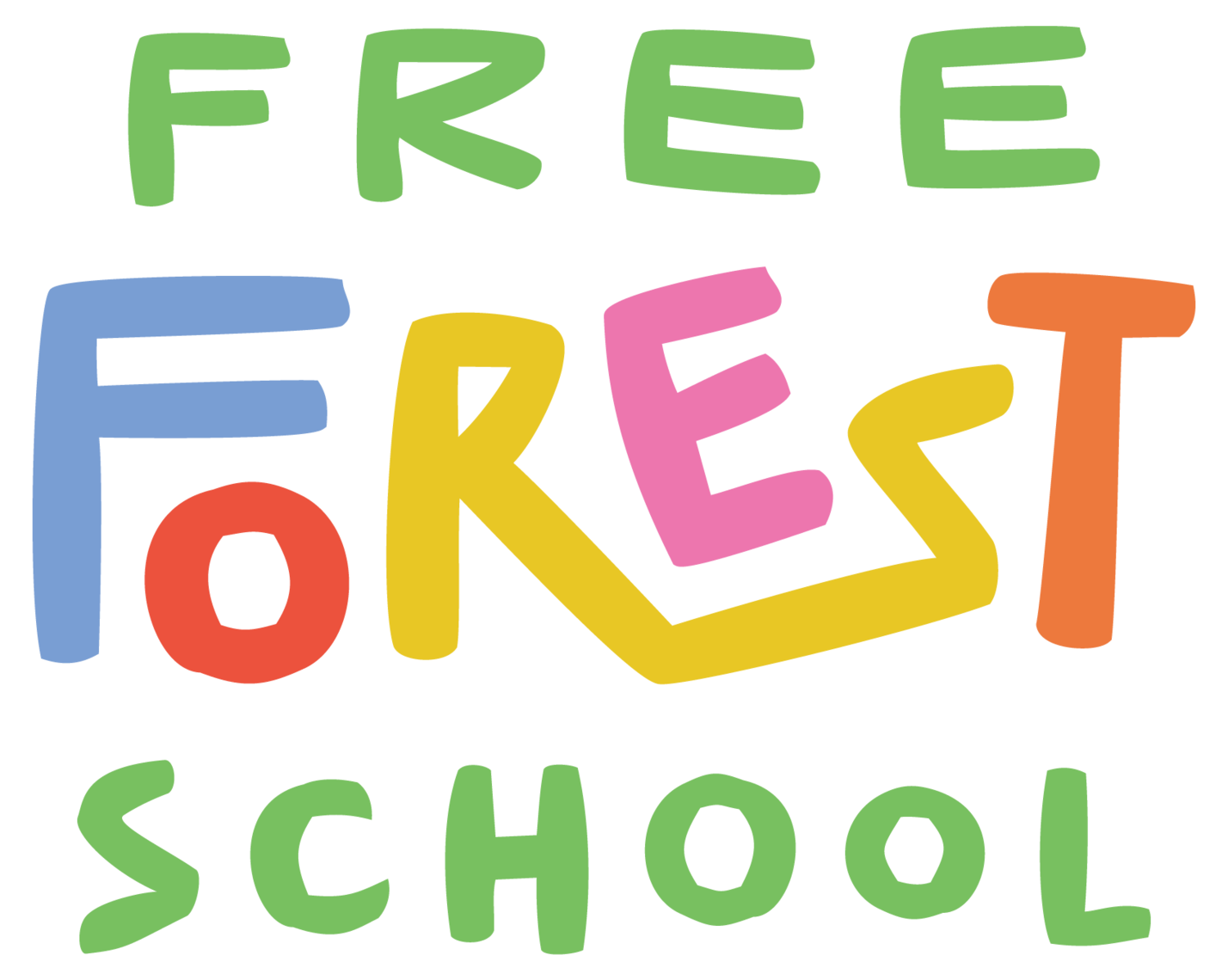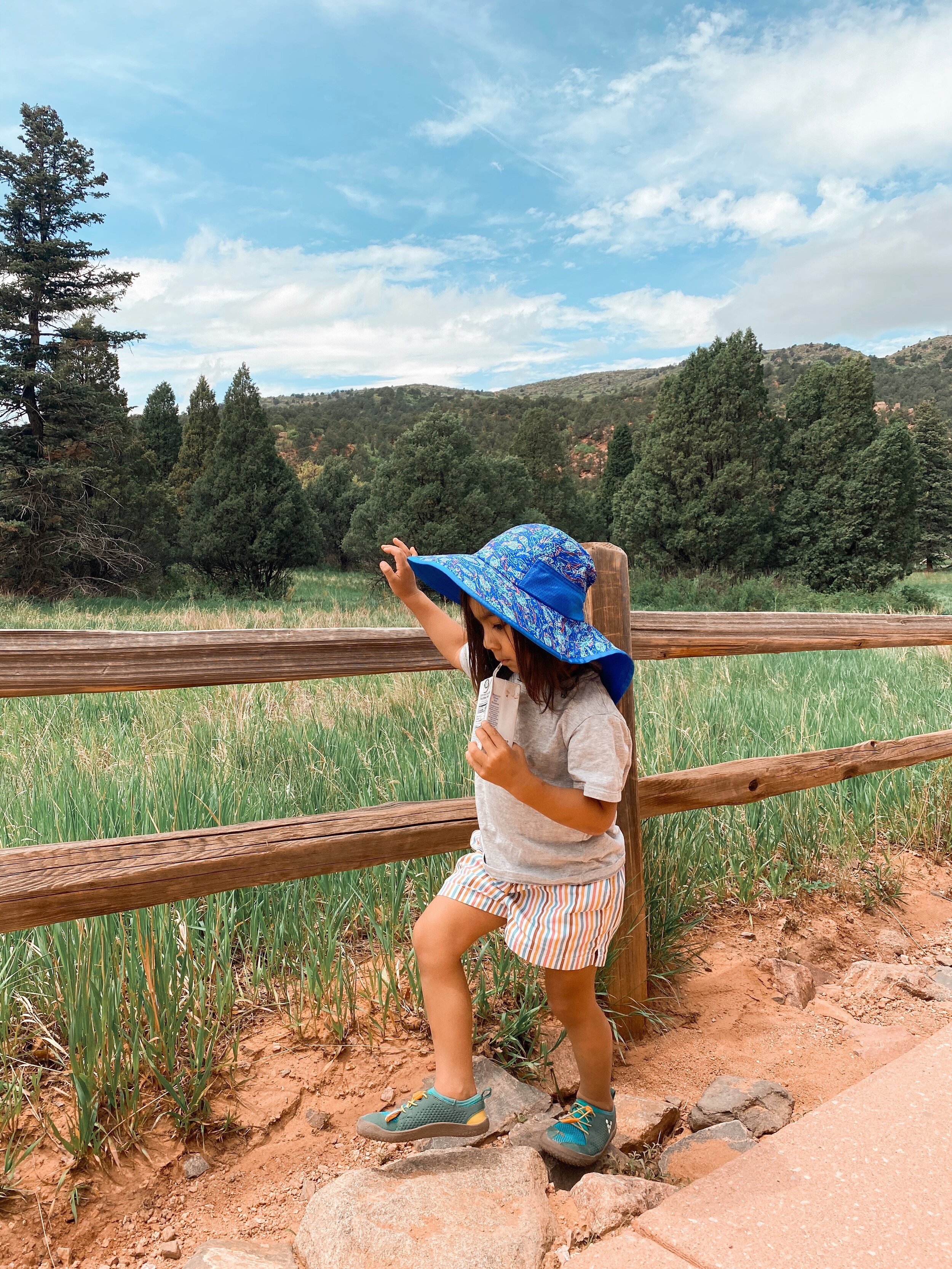Learning and Growing Outdoors
This piece was originally published on the Sunday Afternoons blog.
By Anna Sharratt
Guest blogger Anna Sharratt is the Executive Director of Free Forest School, an organization working to empower caregivers to get outside with their kids. Providing creative, low-budget ways to open up access to unstructured outdoor play has been the focus of Free Forest School since 2015. In this post, Anna showcases three families who are living and breathing examples of this fantastic national nature play movement.
As a parent, it came naturally to bring my kids outside. But what I didn't realize was the value of unstructured play. I gleaned this over time, watching my kids and observing other, more experienced parents who had discovered the magic of stepping back to let their kids play and explore. I came to see that kids are wired to learn through outdoor play, and that the main role of caregivers is to create time and space for them to do so. These three families are doing an amazing job creating opportunities for their kids to get outside, learning and growing together outdoors.
Little Leaders in Virginia
“Follow the kids.” When it comes to navigating the outdoors with little ones, these are words of advice that Karen Vaichus (who goes by K) lives by. As a mom of three kiddos— Evie (3), Seth (almost 2), and Bella (2 months)—K has seen the value in letting them lead without too much intervention from adults. Kids are naturally curious, and when that curiosity becomes the guidepost for your time outdoors, it can open up a world of possibility and exploration. When adults “do less and observe more,” as K quotes early childhood educator Magda Gerber, they greenlight that innate curiosity to take the lead.
When exploring in nature, K suggests, “Go at their pace, even if you don’t get very far on the trail. Whatever the child finds worthwhile is worth our time and attention. Ask them questions but at the same time don’t say too much. Allow them to find their own path, and most of all, enjoy Mother Nature with them.”
Growing up in a busy city in Mexico, K didn’t always feel connected to the outdoors. It wasn’t until she was pregnant with Evie that K became a strong nature play advocate. Now living in Virginia and learning right along with her kids, K appreciates the benefits of nearby nature. “We have had so much fun setting up bird feeders, including a bluebird house, and we are in the process of making a bug hotel. I think the importance of outside time is so valuable and there is so much we can do with a small patch of land.”
Raising the Roots Boys in Minnesota
A hop and a skip away in Bloomington, Minnesota, another mom shares her journey of nature play with her young boys. Thenedra Roots has twin three-year-olds, Sovi and Kaius, 18-month-old Mairo, and is 27 weeks pregnant with another. “Nature connection is important to me because it provides an environment that comes with unlimited learning possibilities and so much calm. I’ve always loved being outdoors, and I love seeing my children explore their surroundings while covered in dirt.”
Thenedra says her boys enjoy helping to care for their backyard chickens and garden and exploring new nature parks. “The biggest barrier of accessing nature has been feeling safe in spaces, such as camping. Camping is an activity I grew up doing. Ever since I was young, I always loved it but always felt uncomfortable because I’m Black, and there weren't ever any other families that looked like me in those environments. It’s put restrictions on where we feel like we can camp and the types of campgrounds we attend.”
Making nature accessible to everyone is essential to creating a world where all kids can grow up enjoying the outdoors. Thenedra is a champion of getting outside regularly, and she encourages anyone new to nature play to start off small. “Sometimes it can be intimidating to take all your kids hiking or camping. For me, it started off by just having snacks or meals outside and engaging in conversations or playing “I-Spy” to encourage kids to take in the environment around them. Another fun and simple activity is a scavenger hunt while you’re on a walk. This helps kids, especially younger ones, have a sensory experience of feeling pine cones, sticks, and the like.”
Thenedra also suggests going with the flow when your efforts to venture out in nature meet resistance. “Recently, we planned to go to a park, but the boys really didn’t want to go in the car, no matter how much we hyped up the new park we’d explore. So we decided to hike down to the trailhead right by our house instead. It was just what we needed. We threw rocks in the water, found lots of sticks, and just took in the simplicity of what was right in our backyard. Sometimes the kids know best!”
Navigating Risk From Hawaii to Colorado
Growing up in Hawaii, most of Olivia Taylor’s fondest memories were outside. “My dad turned our backyard gully into our own paradise. He tiered off the steep drop, and we planted a sunflower patch. Then as you walked down the ramp he had carved out of that vibrant red dirt, you happened upon his pride and joy: a papaya tree grove.” As Olivia describes it, the gully was a place with considerable risk, from stinging centipedes and trickster mongeese to wild boar and fast-moving water that filled the gully whenever it rained.
“Danger seemed to be all around, but as a child, I don’t remember fear. In fact, the first emotion that I recall is feeling so very safe in the gully. I knew the path, and my parents did a great job of educating me of the potential hazards.” Always within shouting distance, her parents let Olivia explore on her own. “I think the trust that I felt both from them and in myself and my abilities was a huge building block in my confidence.”
Olivia wants that now for her own child. She recently moved to Colorado Springs with her wife and four- year-old son Lucas, eager to explore what the landscape has in store for them. One of their challenges is finding a way to safely enjoy a hike or a nature walk with Lucas, who is autistic. “He has so many interests, and I love discovering his gifts every day. Within our daily routine, he is a very happy boy. However, we are still working on him responding to safety cues. He doesn’t look when you say his name or things like “stop.” If he were to get lost, he couldn’t tell a stranger his name or phone number. Like many other autistic children, he has problems with elopement and will take off running without warning.”
Olivia says planning ahead is key. “Our task is to research each trail we choose, and sometimes we have to call it off if we arrive and conditions aren’t ideal, like too many people or cliffs. I never set out to be a helicopter parent, so I hate when I realize that I am hovering a bit. My dream for Lucas is for him to feel the peace and safety that I remember feeling in those magical gully days.” To get outside, Olivia’s family focuses on smaller scale outings: neighborhood walks or wide-open fields. “Even in the concrete jungle of our very suburban neighborhood, we have found nature. Lucas stumbled upon a marsh on one of our walks. It was tadpole season and for weeks he would dart over to check on his frogs. And even though I hated when he did so, I would let him splash in the filthy water and throw rocks off the drop-off as I held his waist all the while.”
Olivia suggests to folks struggling to get outside, “Don’t let the images of a picture-perfect nature family stop you from getting started.” It can get messy, literally. And sometimes that can lead to the moments when kids are the most content.
About the Author
Guest blogger Anna Sharratt is the Executive Director of Free Forest School and a lifelong nature enthusiast with family traditions handed down from many generations. The Boundary Waters of Northern Minnesota is her family’s spiritual base, the place they gather to ground and rejuvenate themselves. Free Forest School works to empower caregivers to get outside with their kids and was born out of Anna’s passion for unstructured outdoor play as the right of every child with lasting benefits to kids and the adults that care for them. You can follow their adventures on Instagram.



